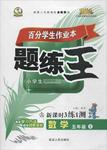题目内容
【题目】我国拟在2016年发射“天宫二号”,预计在2018年前后发射空间站的核心舱,逐步建立自己的空间站。在此之前,“天宫一号”已经在甘肃酒泉卫星发射中心发射升空。结合所学知识回答下列各问题。
【1】相对于海南文昌卫星发射中心,酒泉卫星发射中心的优势主要在于
A.纬度低,地球自转线速度大,可节省燃料
B.降水少,晴天多,适合卫星发射的时期长
C.空中及海上交通都很方便,便于运输
D.无人区面积广,发射后残骸不危及人民安全
【2】下列有关太阳活动对空间站影响的叙述,正确的是
A.太阳活动对空间站的影响可以忽略
B.空间站在地面实验过程中不会受到太阳活动的影响
C.太阳黑子比耀斑对空间站的影响大
D.太阳活动会影响空间站的安全及地—空联系(通信)
【答案】
【1】B
【2】D
【解析】
试题分析
【1】该题主要考查卫星发射基地的区位优势。海南文昌纬度更低,地球自转线速度大,可以节省燃料;海南周围都是海洋,海上交通便利,便于大型火箭的运输;两个卫星发射基地无人区面积都较广,发射后残骸不危机人民安全。与文昌相比,酒泉位于我国西北内陆地区,降水较少,晴天多,发射窗口期长。故答案选B项。
【2】太阳活动是太阳大气大规模的运动所导致的,太阳获得发射出的强烈带电粒子流可以是电离层发生扰动,使得地面与空间站之间的来年息中断,使得空间站的运行失去地面的控制,会对运行轨道高度受影响,A错;极光现象是太阳大气抛出的带电粒子流告诉冲击两极高层大气,出现的,太阳活动不会再空间站引发极光现象,B错;耀斑是太阳活动最激烈的显示,他发出的能量远远大于黑子,C错;太阳活动会影响无线电短波通信,会影响空间站的安全及地-空联系(通讯),答案选D项。

 世纪百通优练测系列答案
世纪百通优练测系列答案 百分学生作业本题练王系列答案
百分学生作业本题练王系列答案【题目】Passage2(2017·新课标卷II,D)
体裁 | 话题 | 词数 | 难度 | 建议时间 |
说明文 | 当植物受到攻击时会保护自己并与周围植物交流 | 293 | ★★★☆☆ | 7分钟 |
When a leafy plant is under attack, it doesn’t sit quietly. Back in 1983, two scientists, Jack Schultz and Ian Baldwin, reported that young maple trees getting bitten by insects send out a particular smell that neighboring plants can get. These chemicals come from the injured parts of the plant and seem to be an alarm. What the plants pump through the air is a mixture of chemicals known as volatile organic compounds, VOCs for short.
Scientists have found that all kinds of plants give out VOCs when being attacked .It’s a plant’s way of crying out. But is anyone listening? Apparently. Because we can watch the neighbours react.
Some plants pump out smelly chemicals to keep insects away. But others do double duty. They pump out perfumes designed to attract different insects who are natural enemies to the attackers. Once they arrive, the tables are turned. The attacker who was lunching now becomes lunh.
In study after study, it appears that these chemical conversations help the neighbors .The damage is usually more serious on the first plant, but the neighbors, relatively speaking, stay safer because they heard the alarm and knew what to do.
Does this mean that plants talk to each other? Scientists don’t know. Maybe the first plant just made a cry of pain or was sending a message to its own branches, and so, in effect, was talking to itself. Perhaps the neighbors just happened to “overhear” the cry. So information was exchanged, but it wasn’t a true, intentional back and forth.
Charles Darwin, over 150 years ago, imagined a world far busier, noisier and more intimate(亲密的)
than the world we can see and hear. Our senses are weak. There’s a whole lot going on.
【1】What does a plant do when it is under attack?
A. It makes noises.
B. It gets help from other plants.
C. It stands quietly
D. It sends out certain chemicals.
【2】What does the author mean by “the tables are turned” in paragraph 3?
A. The attackers get attacked.
B. The insects gather under the table.
C. The plants get ready to fight back.
D. The perfumes attract natural enemies.
【3】Scientists find from their studies that plants can .
A. predict natural disasters
B. protect themselves against insects
C. talk to one another intentionally
D. help their neighbors when necessary
【4】what can we infer from the last paragraph?
A. The world is changing faster than ever.
B.People have stronger senses than before
C. The world is more complex than it seems
D. People in Darwin’s time were imaginative.